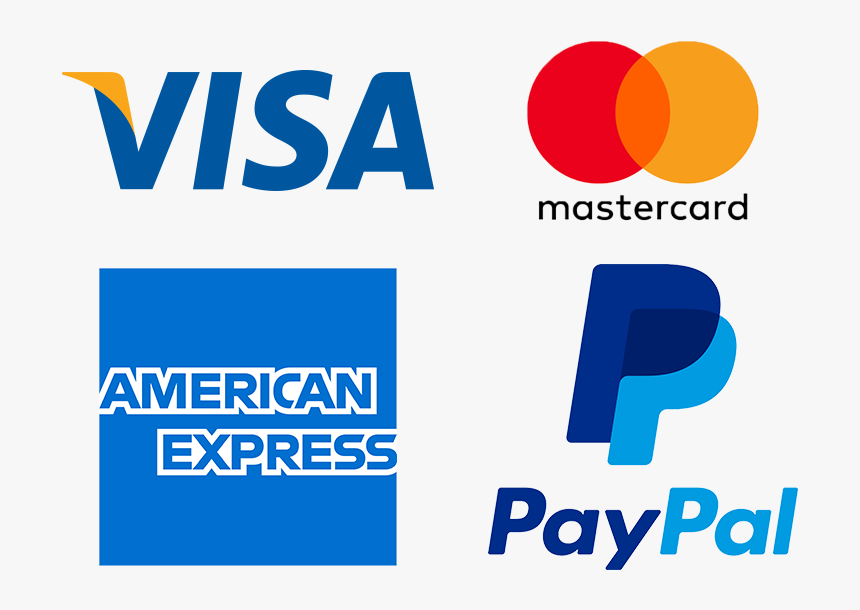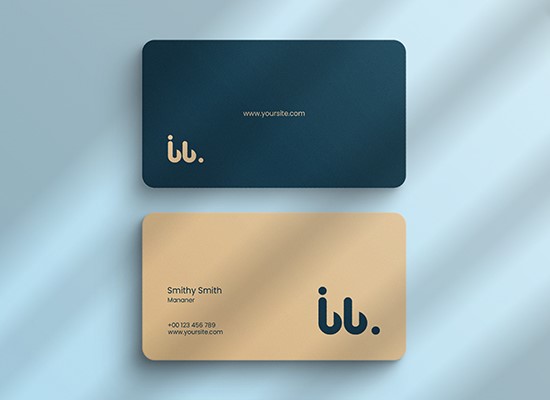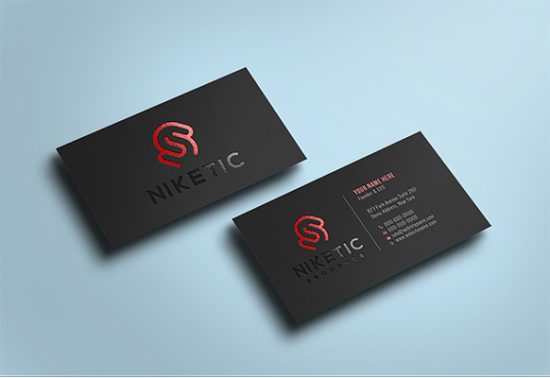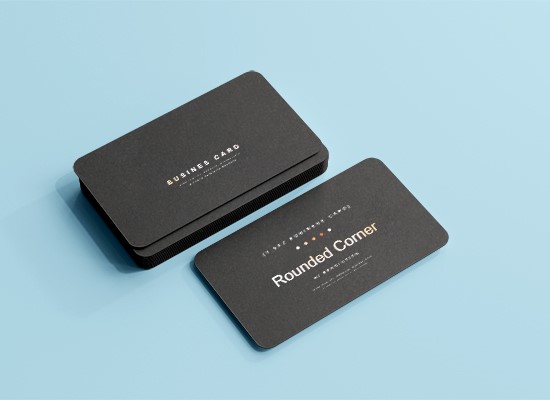Short Description
Laminated Business Cards
Related Products
Additional Information
Laminated Business Cards
Enhance durability with laminated cards. Stylish and resilient, they resist wear and tear while keeping your design vibrant and professional.
Specification
Finished Size:
Standard 85mm x 55mm
Square 55mm x 55mm
Slim 85mm x 40mm
Mini 85mm x 25mm
Printed Sides: Single or Double Sided
Artwork Requirements
Bleed 3mm All Round
Resolution 300 dpi minimum
Format PDF
Colour CMYK
Fonts Outlined or Embedded
Introduction to Laminated Business Cards
Laminated cards have gained immense popularity across various sectors due to their durability, versatility, and aesthetic appeal. From business cards and ID badges to membership and loyalty cards, laminated cards offer a practical solution for those seeking a combination of protection, professionalism, and visual presentation. The process of lamination involves applying a thin plastic film over a card to safeguard it from wear and tear, moisture, and fading, thus enhancing its longevity. In this detailed exploration, we will delve into the various types of laminated cards, their benefits, applications, and best practices for design and production.
What Are Laminated Business Cards?
Laminated cards are cards that have been sealed between layers of plastic film through a lamination process. This process protects the card from physical damage while enhancing its visual appeal. Laminated cards are commonly used in various applications, including business cards, membership cards, identification cards, loyalty cards, promotional materials, and more.
The Lamination Process
The lamination process can be performed using two primary methods:
- Hot Lamination: In hot lamination, heat and pressure are applied to seal the plastic film onto the card. This method creates a strong bond between the card and the laminate, providing excellent durability and protection. Hot lamination is often used for thicker cards and those requiring a high level of protection.
- Cold Lamination: Cold lamination uses adhesive films that are applied without heat. This method is typically used for thinner cards and is easier to handle, making it a suitable option for smaller production runs. Cold lamination may not provide the same level of durability as hot lamination, but it is still effective for many applications.
Benefits of Laminated Business Cards
Laminated cards offer a myriad of advantages, making them a preferred choice for businesses and individuals alike. Some of the key benefits include:
- Durability: One of the most significant advantages of laminated cards is their durability. The lamination process protects cards from physical damage, including bending, tearing, and scratching. This resilience ensures that cards remain in excellent condition even after prolonged use, making them ideal for business cards that are frequently exchanged.
- Water Resistance: Laminated cards are resistant to moisture, making them ideal for environments where they may be exposed to spills or humidity. This feature is particularly important for outdoor events, promotions, or industries such as hospitality, where cards may come into contact with liquids.
- Fading Resistance: Over time, printed materials can fade due to exposure to sunlight and environmental factors. Laminated cards help preserve the vibrancy of colors and graphics, ensuring that your message remains clear and visually appealing. This longevity is crucial for marketing materials that need to maintain their effectiveness over time.
- Enhanced Appearance: Laminated cards often have a glossy or satin finish, which can enhance the visual appeal of designs. This polished look can make a card appear more professional and eye-catching, contributing to a positive first impression. The smooth surface also allows for more vibrant and accurate printing, making the colors pop.
- Easy to Clean: The protective layer of laminate makes it easy to wipe down and clean cards, ensuring that they remain presentable even after handling. This feature is especially beneficial in industries where hygiene is critical, such as food service or healthcare.
- Cost-Effectiveness: While laminated cards may have a higher initial production cost than non-laminated options, their durability and longevity often result in cost savings over time. Businesses can reduce the frequency of reprinting and replacement, making laminated cards a more economical choice in the long run.
- Professional Appeal: Laminated cards convey a sense of professionalism and quality. Whether used for business cards, ID badges, or promotional materials, laminated cards can enhance the overall perception of your brand and make a lasting impression on clients and customers.
Types of Laminated Business Cards
Laminated cards come in various forms, each tailored to specific applications and industries. Some common types include:
- Business Cards: Laminated business cards are a popular choice for professionals who want to make a strong impression. The added durability and visual appeal of lamination help ensure that your card remains in excellent condition, making it more likely to be kept and remembered by potential clients or partners.
- ID Cards: Employee ID cards and access cards benefit greatly from lamination. The protective layer helps prevent damage from daily wear and tear, ensuring that the cards remain functional and legible over time. Laminated ID cards can also feature additional security features, such as holograms or barcodes.
- Membership Cards: Laminated membership cards for gyms, clubs, and organizations provide durability and longevity. These cards can be designed with unique branding elements and often include magnetic strips or QR codes for easy scanning and tracking.
- Loyalty Cards: Many businesses use laminated loyalty cards to encourage repeat customers. The durability of laminated cards ensures that they can withstand frequent use, while the aesthetic appeal helps promote brand loyalty.
- Promotional Materials: Laminated promotional cards, such as postcards or flyers, can be used for marketing campaigns and events. The added protection helps keep these materials looking fresh and vibrant, making them more effective in capturing attention and conveying messages.
- Gift Cards: Retailers often use laminated gift cards to provide customers with a tangible product that can be reused. Laminated gift cards are durable, water-resistant, and can be customized with various designs to enhance branding.
Applications of Laminated Business Cards
Laminated business cards are widely used across various industries, thanks to their versatility and effectiveness. Some notable applications include:
- Corporate and Business Use: In the corporate world, Laminated Business Cards are frequently utilized for business cards, employee ID badges, and access control cards. The durability of laminated business cards ensures that they remain functional and visually appealing, contributing to a professional image.
- Education: Educational institutions often use laminated cards for student IDs, library cards, and membership cards for clubs and organizations. The durability of laminated cards helps them withstand daily use in school environments, while their vibrant designs can foster school spirit.
- Events and Conferences: Laminated business cards are commonly used for event badges and conference materials. The protective layer ensures that the cards remain in excellent condition throughout the event, allowing attendees to easily identify themselves and engage with others.
- Hospitality: In the hospitality industry, laminated cards can be used for key cards, membership cards, and promotional materials. The water-resistant properties of laminated cards make them suitable for environments where spills and moisture are common.
- Retail and Loyalty Programs: Retailers utilize laminated business cards for loyalty programs, gift cards, and membership cards. The durability of laminated cards ensures that customers can use them repeatedly, while the visual appeal helps attract and retain customers.
- Healthcare: Laminated cards are often used for patient ID cards, health insurance cards, and appointment reminders. The longevity and durability of laminated cards are essential in healthcare settings, where cards may be subject to frequent handling.
- Government and Security: Government agencies often use laminated cards for identification purposes, such as driver’s licenses, permits, and security badges. The protective layer helps maintain the integrity of the cards and can incorporate various security features to prevent tampering.
Design Considerations for Laminated Business Cards
When designing laminated cards, there are several key considerations to ensure they are effective and visually appealing:
- Material Selection: Choose the appropriate card stock and laminate type based on the intended use. Thicker card stock may be preferable for business cards, while thinner stock might suffice for temporary or promotional cards.
- Size and Shape: Standard business card dimensions are 3.5 x 2 inches, but custom sizes and shapes can enhance uniqueness. Ensure that the design fits comfortably within the card’s dimensions, leaving space for essential information.
- Color and Graphics: Utilize high-resolution images and vibrant colors to create an eye-catching design. Ensure that text and graphics contrast well with the background to enhance readability.
- Information Layout: Organize information clearly and concisely. Key details such as names, titles, contact information, and logos should be easy to find. Avoid overcrowding the card with excessive information.
- Typography: Choose fonts that are legible and consistent with your brand identity. Maintain a hierarchy in text size to emphasize important information, such as your name and title.
- Finish Selection: Decide whether a glossy or matte laminate finish is more suitable for your design. Glossy finishes enhance vibrancy and color depth, while matte finishes can provide a more subdued, professional look.
- Proofing: Always proofread the card design to eliminate errors. Print a test card to evaluate how the final product will look and make any necessary adjustments before mass production.
Production Process for Laminated Business Cards
The production of laminated cards involves several key steps, from design to final output. Here’s a typical workflow:
- Design Creation: Begin by creating the card design using graphic design software. Ensure that the dimensions, colors, and typography align with your vision and branding.
- Printing: Once the design is finalized, it’s time to print the cards. High-quality printing is essential for vibrant colors and sharp graphics. Digital printing is commonly used for small to medium-sized runs, while offset printing may be more suitable for larger quantities.
- Lamination: After printing, the cards are laminated. Depending on the chosen method, either hot or cold lamination is applied to seal the cards in plastic. This step is crucial for ensuring the cards’ durability and protection.
- Cutting: Once laminated, the cards are cut to the desired size and shape. Precision cutting is essential to ensure clean edges and uniformity across the batch.
- Quality Control: Conduct quality checks to ensure that the cards meet the desired standards. Inspect for any defects,
Get Your Quote
My Account
About Us
Our Products
Contact
Follow Us On
We Accept




















